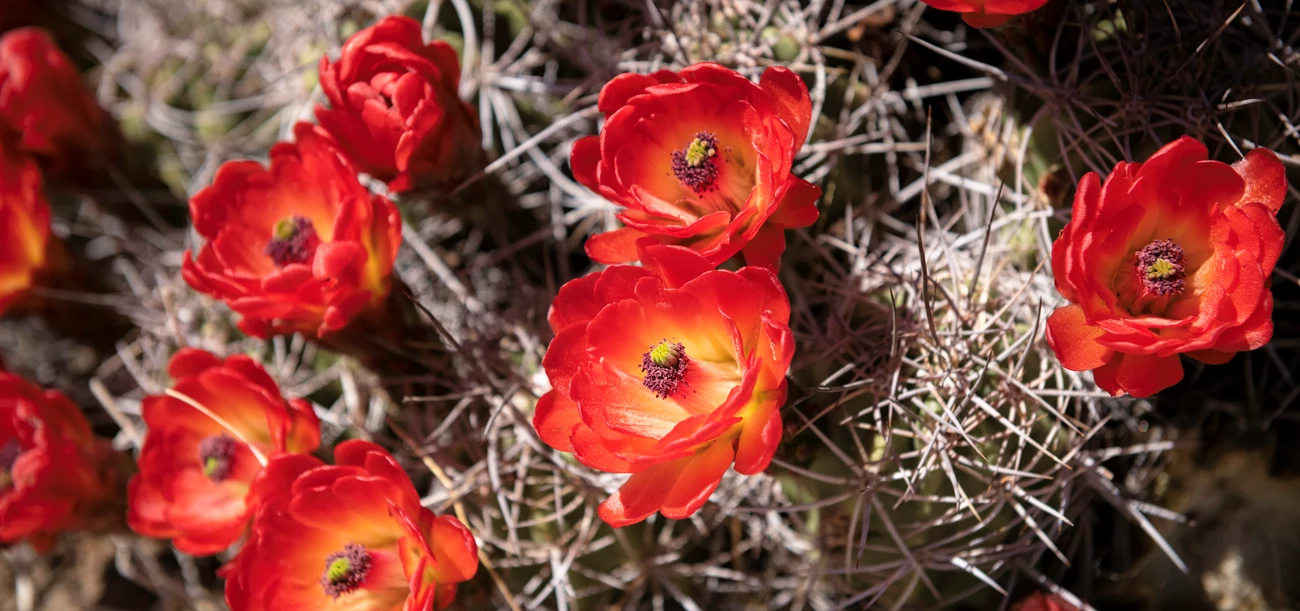
NPS/Emily Hassell What Makes a Cactus Unique?Cacti are among the most extraordinary plants in the desert, not just for their striking forms but for their incredible ability to survive intense heat, fierce sunlight, and long droughts. Unlike most leafy plants, which cool themselves by opening pores during the day, cacti have adapted a very different strategy. Cactus pores (called stomata) only open at night. This adaptation prevents water loss during the hottest parts of the day but comes at a cost: cacti cannot cool themselves through transpiration like other plants. Instead, they rely on internal mechanisms to tolerate extreme temperatures. 
NPS/Paul Martinez Built for the HeatSome cacti have evolved to survive heat levels that would destroy most other plant life. The teddybear cholla (Cylindropuntia bigelovii), for example, can endure air temperatures up to 138°F. Even more astonishing, its tissues can become nearly 60°F hotter than the surrounding air without damage. In those moments, it isn't just surviving the heat—it’s outlasting it. Cactus Anatomy: Strength in StructureCacti are designed to store water and minimize water loss. Their thick, fleshy stems act like reservoirs, while their spines reduce air flow across the surface and provide a bit of shade. Many species also grow ribs that expand and contract depending on water availability, allowing them to absorb and store rainfall efficiently. The absence of leaves reduces evaporation, and a waxy coating on the skin helps seal in moisture. Every element of a cactus is a purposeful adaptation for thriving in arid environments. Life Among the SpinesCacti also serve as important ecological anchors. Birds like the cactus wren build nests inside the protection of their spines. Insects pollinate their brilliant flowers, and desert reptiles often find shelter in the shade of a cactus base. In bloom, these plants offer brief bursts of color—sudden invitations in the silence of the desert. Threats to CactiThough tough and long-lived, cacti are not immune to harm. Habitat loss, illegal poaching, off-trail recreation, and climate change are putting stress on populations across the Southwest. Some species are now federally listed as threatened or endangered. Cacti of Joshua Tree National Park
NPS/Donovan Smith Coryphantha alversonii (cushion foxtail cactus) Why They MatterTo understand a cactus is to understand the desert itself: harsh and unforgiving on the surface, yet filled with resilience and beauty. These plants teach us about adaptation, conservation, and the art of enduring with grace in the most extreme conditions. Their presence reminds us that survival isn’t always about resistance—it’s often about refinement, patience, and balance. |
Last updated: May 5, 2025
